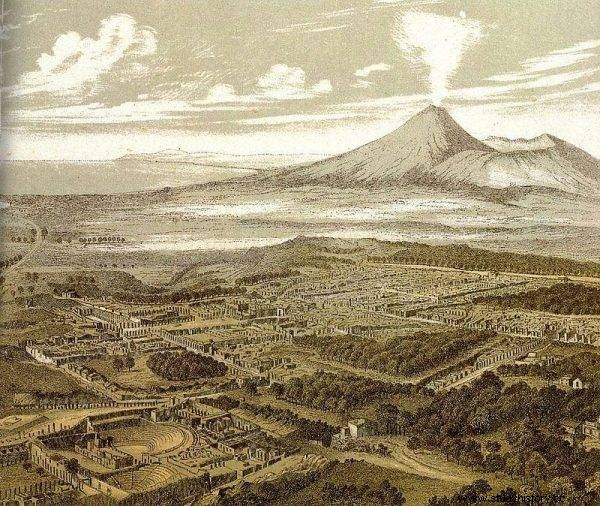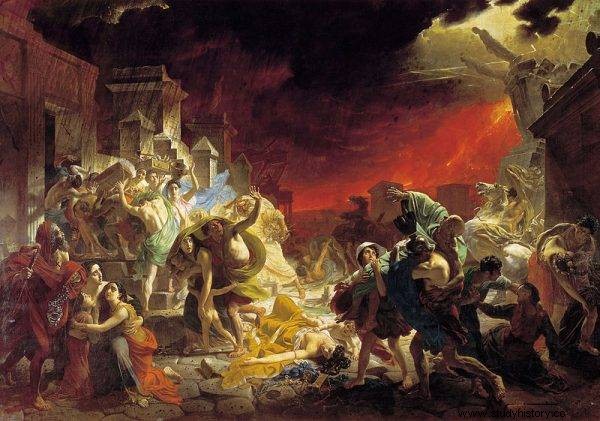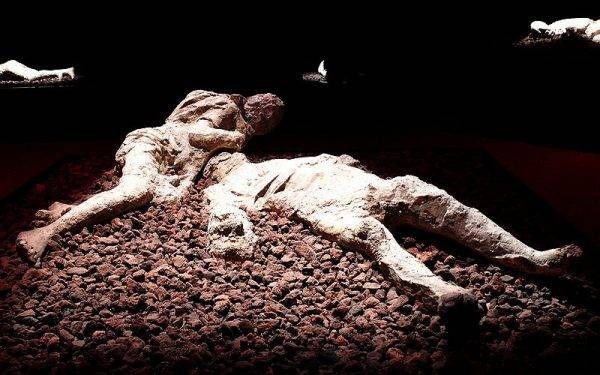It is one of the most famous ancient cities in the world today - and one of the most famous catastrophes in history. Ancient buildings and thousands of human remains lay under a layer of volcanic ash and pumice for almost 2,000 years. What were the last moments of the inhabitants of Pompeii like?
Founded in the 7th century BC through Osków, the city was inhabited and shaped by Samnites, Greeks and Romans throughout history. During the war between Rome and its allies, the people of Pompeii took the side of the rebellion. The defeat brought them partial destruction of the city, transformation into a military colony and the removal of their rights. In the 1st century CE the city flourished again thanks to trade, but its inhabitants were not expected to enjoy the change for too long.
First wave of destruction
Pompeii suffered significant losses on February 5, 62 CE. as a result of the earthquake. Strong seismic movements that hit the city destroyed about 65% of its area. Pompeii became the epicenter of this catastrophe, but apart from them, the surrounding villages and villas also suffered. Huge losses were also suffered in the flock.

Pompeii suffered significant losses on February 5, 62 CE. due to the earthquake.
The city froze. The painting after this catastrophe consisted of fallen temples and houses, broken statues. There are no public buildings or cultural centers left. The burned-down furnaces ignited fires that were difficult to control due to the damaged water supply. However, the inhabitants, although in mourning and often dazed, did not give up and decided to rebuild Pompeii in the same year.
Hope for a normal life
Pompeians began the reconstruction with a religious act. After such a catastrophe, it was necessary to appease the gods and make sacrifices to them! The city was placed under the care of the laras - the souls of the deceased, the guardian and prosperous deities. A place of worship was established for them right next to the temple of Vespasian, which was being built at the same time.
The reconstruction of the city took the next years. All construction and cleaning works burdened the pockets of the residents. More important buildings were financed by wealthy members of the community. In this way, among others, the temple of Isis, founded by Numerius Popidius Celsinus, was reconstructed.
Despite the introduction of extraordinary management measures, Pompeii faced many problems of an administrative and orderly nature. Nevertheless, by joining forces and with the help of new construction techniques, the city revived and began to enter the period of its greatest prosperity. Only to disappear under the dust and pumice stone in a moment.
Relentless fate
In 79 C.E. the people of Pompeii began to look confidently to the future. However, the inexorable fate had other plans for them. On August 24, the bustling city froze and transferred the moment of its prosperity to the future.
The eruption of Vesuvius was described by an eyewitness - Pliny the Younger. However, his account should be interpreted with a certain distance, because in his letters he wanted to present, first of all, the great naturalist, and his uncle - Pliny the Elder. Nevertheless, they tell us a lot about what might have happened then.

In 79 C.E. the people of Pompeii began to look confidently to the future. However, the inexorable fate had other plans for them. On August 24, the bustling city froze and transferred the moment of its prosperity to the future.
In the account we find Pliny the Elder, who at 7 a.m. on the fateful day of August 24, 79 CE. received information about a strange looking cloud approaching. Hearing this, the scientist dressed himself and set off to the best place to observe this unusual phenomenon.
Indeed, a cloud was beginning to rise high (looking at the distance, it was impossible to see which mountain it was rising from, then it was decided that it was above Mount Vesuvius). the appearance and shape of the tree and the eye seemed to be a great pine ; namely, having risen to a considerable height in the form of a strongly elongated trunk, it spread horizontally like branches.
I suppose it was pushed up by a column of air that first spewed from inside the mountain. When the air column fell, the cloud, due to the lack of support, or maybe simply falling under its own weight, flattened.
Dangerous Rescue Expedition
Observing such an unusual phenomenon, Pliny the Elder began to prepare for a research expedition. However, while preparing, he received a letter asking for help.
At the last moment, he receives a letter from Rectina, Tak's wife, terrified of the impending danger (her villa was situated lower and Rectine could only escape on the ship). She asked to be saved in such great danger. Uncle changes his mind. And what he undertook out of love for knowledge, he ended with a heroic sacrifice for the people.

The people of Pompeii were frozen in ashes forever.
Pliny the Elder reached the city of Stabia, which, together with Pompeii and Herculaneum, was destroyed during the eruption of Vesuvius. Having reached the place, Pliny tried to calm the inhabitants with his behavior. So he took a bath and sat down to eat. As reported by Pliny the Younger:
Meanwhile, Mount Vesuvius boiled in many places with extensive flames and tall columns of fire whose brilliance and brightness grew even more intense in the darkness of the night. His uncle, wishing to appease the fears of his surroundings, kept repeating that these were houses that were burning alone, which the peasants had given themselves over to the flames, leaving their houses in a disorderly escape.
Pliny the Elder then went to sleep, while pieces of pumice stone and ash were already falling all over the place. At last he was awakened, and after a conference they all went to the sea, covering their heads with pillows. It was impossible to escape. The turbulent waters were not yet navigable. Pliny lay down on the outstretched canvas.
“In turn, the flames and the smell of sulfur that heralded them forced others to flee, and stimulated my uncle to get up. He leaned on two slaves, stood and immediately fell lifeless "- reports these events Pliny the Younger on the basis of his observations and reports that he heard.
An invisible account
The letters of Pliny the Younger do not provide us with direct information from the crash site. None of the heroes were in Pompeii itself to be able to tell the exact story of their doom. Pliny the Younger recreates the events of the city of Stabie from the overheard account and supplements it with his observations as a distant observer of the explosion.
Unfortunately, although very detailed, the account recorded in Pliny's letters does not allow us to reconstruct the entire course of the Vesuvius eruption . The results of the archaeological research of the ancient city brought further clues on this subject. Research work has made it possible to fill many gaps in this story.
More than 1,500 years after the tragic events, Pompeii began to be rediscovered. The indications discovered since then have led to the commencement of regular excavation works. Pompeii is investigated and secured to this day, and the city, abandoned by the disaster, speaks to us anew.
But Pompeii is not the only abandoned place to remain silent in the face of great events. You will discover more such stories in the latest Polsat Viasat History series "Abandoned places"; premiere on August 1 at 21:00.
Literature:
- Beard, Pompeii. Roman city life , Poznań 2017.
- De Carolis, G. Patricelli, Vesuvius, A.D. 79:the destruction of Pompeii and Herculaneum , Los Angeles 2003.
- Étienne, Daily Life in Pompeii , Warsaw 1971.
